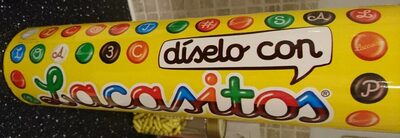Lacasitos 1.500 grs. - Lacasa
Aquesta pàgina del producte no està completa. Podeu ajudar a completar-la editant-la i afegint-hi més dades a partir de les fotos ja disponibles, o fent-ne més amb l'aplicació de androide o iPhone / iPad. Gràcies!
×
Codi de barres: 8410740006491 (EAN / EAN-13)
Marques: Lacasa
Categories: Snacks, Aperitius dolços, Llaminadures, en:Caramels
Matching with your preferences
Entorn
Empaquetament
Transport
Report a problem
Fonts de dades
Producte afegit per kiliweb
Última modificació de la pàgina del producte per kiliweb.
La pàgina del producte, també editada per acuario, elcoco, musarana, openfoodfacts-contributors, yuka.JpNZBMLRP_YGRvqM7rsR8yW-SNa_ONsDHmQ_og, yuka.P69AIvivFssAEcbgzrhl8BypTf_YXKZ4AWQ1og, yuka.U1lJaks0OGJqT2NRbHZKbjBqNzdwdXhXNWNLUFdFYUpBczR2SVE9PQ.
Si les dades són incorrectes o incompletes, pot completar o corregir editant aquesta pàgina.









